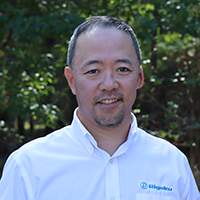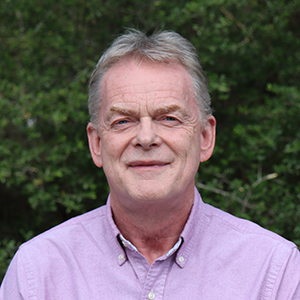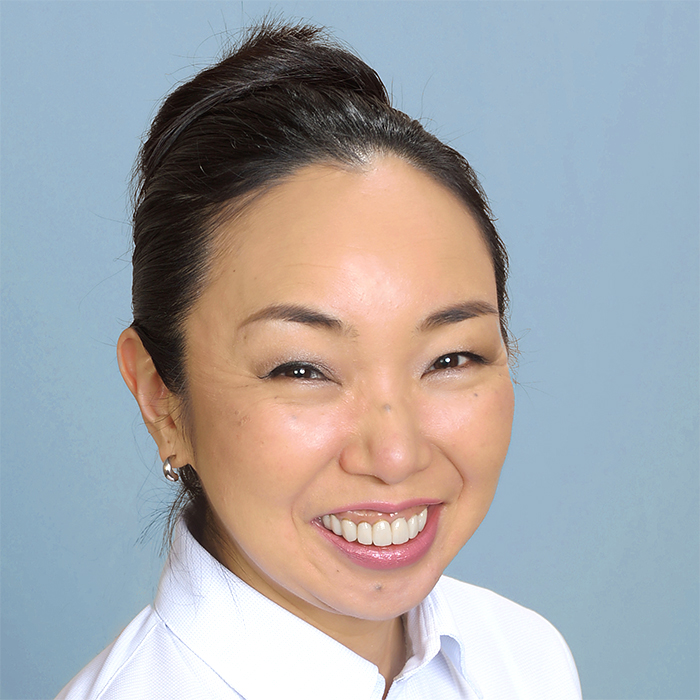Beneath the Surface: X-ray Analyses of Battery Materials and Structures
A BATTERY WEBINAR SERIES BY RIGAKU
Are you facing challenges, such as cost, material shortages, and safety issues, in your battery research, recycling, or process control? In-depth analysis of the chemical composition of raw materials, in operando monitoring of crystal structures at an atomic and molecular level, and even non-destructive imaging of assembled batteries can provide insights that help you overcome various challenges.
In this webinar series, you will learn how to leverage X-ray analysis techniques to gain insights into battery performance. We will cover X-ray diffraction (XRD), X-ray fluorescent (XRF) elemental analysis, and X-ray computed tomography (CT) non-destructive testing. Our expert speakers will guide you through experimental setups and real-world applications.
Whether you're a researcher, engineer, or process control manager, this series will empower you with the knowledge to understand battery behavior at a nanometer to millimeter scale. You can register for individual episodes.
WEBINAR SERIES
When To Use XRD and How to Set Up Experiments for Li-Ion Battery Research
When: Wednesday, September 20, 2023 at 1 PM | CDT
Do you know how to set up and optimize your XRD experiments; Which X-ray source, optics, detectors, and sample stages to use, to maximize the quality of the data and gain accurate insights fast?
Modern XRD instrument supports multiple configurations, e.g. Bragg-Brentano, parallel beam, focusing beam, different X-ray sources, 1-D or 2-D detectors, and a wide variety of sample holders. It is not easy to figure out the best configuration for each analysis need.
For example, most X-ray diffractometer is equipped with an X-ray source with a copper anode, which is not the best for lithium-ion battery (LIB) materials including 3D transition metals, such as manage iron, cobalt, or nickel. The anode needs to be optimized for your sample. Operando measurements often require fast scans to observe phase transformation. This requires optimizing the source, the geometry, and the detector to be optimized for the maximum speed.
In the webinar, you will learn the best practices and how to configure your XRD for each application and analysis need.
Presenter: Keisuke Saito, PhD | Co-presenter: Tim Bradow | Host: Aya Takase

Keisuke Saito | Director of Application Science
Rigaku Americas Corporation | Texas, USA
Keisuke Saito is a Director of Application Science and holds a PhD material science. He has been focused on X-ray diffraction (XRD) since 1996. He has extensive experience in the application field including battery, semiconductor, photoelectric, piezoelectric, and ferroelectric. He studied characterization of piezo- and ferroelectric materials using XRD at Tokyo Institute of Technology for his PhD. He enjoys using the skills he learned to measure and analyze functional powder and thin film materials. In the webinar, he helps professionals how to find out the best configurations for XRD depending on targets. Want to learn more? Connect with Keisuke on LinkedIn.
HOW TO RUN IN OPERANDO XRD EXPERIMENTS
When: Wednesday, November 15, 2023 at 1 PM | CDT
Did you know that you can collect XRD data while charging/discharging a lithium-ion battery (LIB)?
Despite the significant advancement of LIB technology, further improvements and optimizations are still required to solve challenges such as energy density, cycle life, and safety. In operando XRD can help us gain a fundamental understanding of the reaction mechanisms in physical and chemical processes during LIB operation.
In the webinar, you will learn the best practices, how to prepare samples, and the best ways to configure your in operando XRD experiments. You will see both application examples of liquid and solid-state electrolyte batteries.
Presenter: Keisuke Saito, PhD | Co-presenter: Tim Bradow | Host: Aya Takase
Watch the recording

Keisuke Saito | Director of Application Science
Rigaku Americas Corporation | Texas, USA
Keisuke Saito is a Director of Application Science and holds a PhD material science. He has been focused on X-ray diffraction (XRD) since 1996. He has extensive experience in the application field including battery, semiconductor, photoelectric, piezoelectric, and ferroelectric. He studied characterization of piezo- and ferroelectric materials using XRD at Tokyo Institute of Technology for his PhD. He enjoys using the skills he learned to measure and analyze functional powder and thin film materials. In the webinar, he helps professionals how to find out the best configurations for XRD depending on targets. Want to learn more? Connect with Keisuke on LinkedIn.
Pair Distribution Function (PDF) Analysis for Everyday Battery Analysis
When: Wednesday, February 21, 2024 at 1 PM | CDT
Did you know in operando measurements of the X-ray scattering Pair Distribution Function (PDF) can help you see the changes in the local order/disorder within cathode and anode materials?
In the charge/discharge cycling of lithium-ion batteries (and other novel battery technologies), there is a continuous buildup of local disorder in the cathode and anode materials driven by the Li-ion mobility that will eventually contribute to battery failure and reduced operational lifetime.
Characterization of the nature and extent of this local disorder can lead to predictive insights into battery failure mechanisms.
In-operand measurements of the X-ray scattering PDF can allow direct modeling of the changes in the local order/disorder within the cathode and anode material as well as for solid electrolytes if used.
In the webinar, we will investigate how best to collect in operando PDF data and discuss the optimum data processing approaches to give meaningful results. In particular, the use of Reverse Monte Carlo techniques to give physical representations of the locally disordered structure will be presented.
Presenter: Simon Bates | Co-presenter: Tom Concolino | Host: Aya Takase
Watch the recording
Simon Bates | VP of Science and Technology
Rigaku Americas Corporation | Texas, USA
Simon Bates is V.P. of Science and Technology at Rigaku Americas Corp., where he nurtures collaborative relationships between industry partners and academia in the discovery of new technologies and methodologies for the next generation analytical systems. His fascination with materials science and analytics has led Dr. Bates on an interesting career path. Having received his Ph.D. from the University of Hull for his neutron diffraction studies on the magnetic properties of rare earth materials, Dr. Bates completed his postdoctoral work at the University of Edinburgh where he first started to design and build specialized high resolution X-ray diffraction system for materials characterization. He continued working on X-ray analytical systems and software design throughout his career at Philips, Shimadzu (Kratos), Bede Scientific, and Rigaku. However, before joining Rigaku, Dr. Bates explored a different career direction and spent 17 years working in pharmaceutical contract research at SSCI and then Triclinic Labs., where he expanded his toolkit for materials analysis to embrace thermal methods and IR/Raman spectroscopy while experimenting in organic chemistry and molecular modeling. Dr. Bates has continued his relationship with academia, volunteering as an Adjunct Professor at Purdue University, University of Hawaii Hilo and more recently at the University of Long Island. Want to learn more? Connect with Simon on LinkedIn.
Non-destructive Elemental Analysis of Batteries Using XRF
When: Wednesday, June 19, 2024 at 1 PM | CDT
Did you know you can non-destructively analyze the elemental composition of various battery components using the X-ray fluorescence (XRF) technique?
XRF does not require the digestion of samples. You can analyze powder and solid samples with minimal to no sample preparation and gain their elemental composition ranging in levels from ppm to percent. Wavelength dispersive XRF (WDXRF) spectrometers can be analyzed from beryllium to curium. The fundamental parameter method enables standardless semi-quantitative analysis, while the conventional calibration method using standards can provide more accurate results, depending on the accuracy requirements.
XRF is ideal for quantifying the main elements of NCM (nickel, cobalt, and manganese) in the cathode, as well as impurities or foreign materials in coatings and carbon cathodes. Appropriate sample preparation methods allow air and humidity-sensitive materials to be analyzed easily.
In this webinar, you will learn how to prepare different types of battery samples for WDXRF elemental analysis and see various application examples.
Presenter: Amber Quevy | Co-presenter: Tim Bradow | Host: Aya Takase

Amber Quevy
Rigaku Americas Corporation | Texas, USA
Amber holds an M.S. from Midwestern State University in Geosciences and has been with Rigaku since July 2019. She started in the X-Ray Fluorescence Applications Lab and has worked with many departments while at Rigaku. She currently enjoys working collaboratively across the applications, sales, and service teams to address and support customer needs in both the pre- and post-sales areas. Amber has experience working with many different materials and enjoys helping customers find preparation techniques and instrumentation that suits their needs for elemental analysis Want to learn more? Connect with Amber on LinkedIn.
Non-destructive inspection of batteries using X-ray Computed Tomography
When: Wednesday, August 21, 2024 at 1 PM | CDT
Did you know X-ray computed tomography (CT) can reveal structural deformities and defects and inspect for proper alignment of electrodes, separators, and electrolytes non-destructively?
X-ray CT is a powerful technique that allows non-destructive imaging of batteries. In this webinar, we will discuss important factors to consider when using X-ray CT methods to inspect batteries. We will also examine data analysis techniques to extract meaningful insight into battery structure and function.
Presenter: Angela Criswell | Co-presenter: Tim Bradow | Host: Aya Takase

Angela Criswell | Senior Scientist
Rigaku Americas Corporation | Texas, USA
Angela holds a PhD from Rice University and has been with Rigaku for since January 2002. She started in the Macromolecular Crystallography Applications lab focusing on X-ray techniques to study structural biology. She has gained expertise in a number of X-ray methods in her tenure at Rigaku, including small angle X-ray scattering and X-ray computed tomography. Angela likes working with customers to find the best fit for their samples while addressing their specific experimental questions. Want to learn more? Connect with Angela on LinkedIn.
Aya Takase | Head of Global Marketing
Rigaku Corporation | Texas, USA
Aya holds a PhD in engineering from Osaka University and an MA in physics from Tokyo University of Science. She has been with Rigaku since April 1998. She started in the X-ray Diffraction Application Lab and transitioned to X-ray Imaging in 2017. She now focuses on providing educational and useful content for X-ray users. Her goal: Help non-expert X-ray users achieve expert results with less time and effort. She has worked on many projects designing automated and user-friendly X-ray instruments and analysis software. She is very passionate about helping people learn more about X-rays and working with X-ray users to solve their specific problems. Want to learn more? Connect with Aya on LinkedIn.

HOST
Tim Bradow | Sr. Business Development Manager
Rigaku Americas Corporation | Colorado, USA
Tim Bradow is a Sr. Business Development Manager at Rigaku Americas Corporation. He is focused primarily on developing relationships, collaborations and partnerships related to X-ray analytical instruments that assist battery researchers and manufacturers in the thriving battery industry. Tim holds a Bachelor of Science in Electrical & Electronics Engineering (BSEEE) degree from North Dakota State University and recently joined Rigaku in early 2022. He has experience with a variety of battery chemistries and applications, including all solid-state thin-film batteries, and has been on the leadership team of multiple battery technology companies. Tim is very passionate about helping people learn more about Rigaku’s powerful X-ray analytical solutions and working with battery scientists to ensure they have access to the best tools to improve their atomic-level understanding of advance materials for next generation batteries Want to learn more? Connect with Tim on LinkedIn.
.jpg)
CO-HOST


.png)
